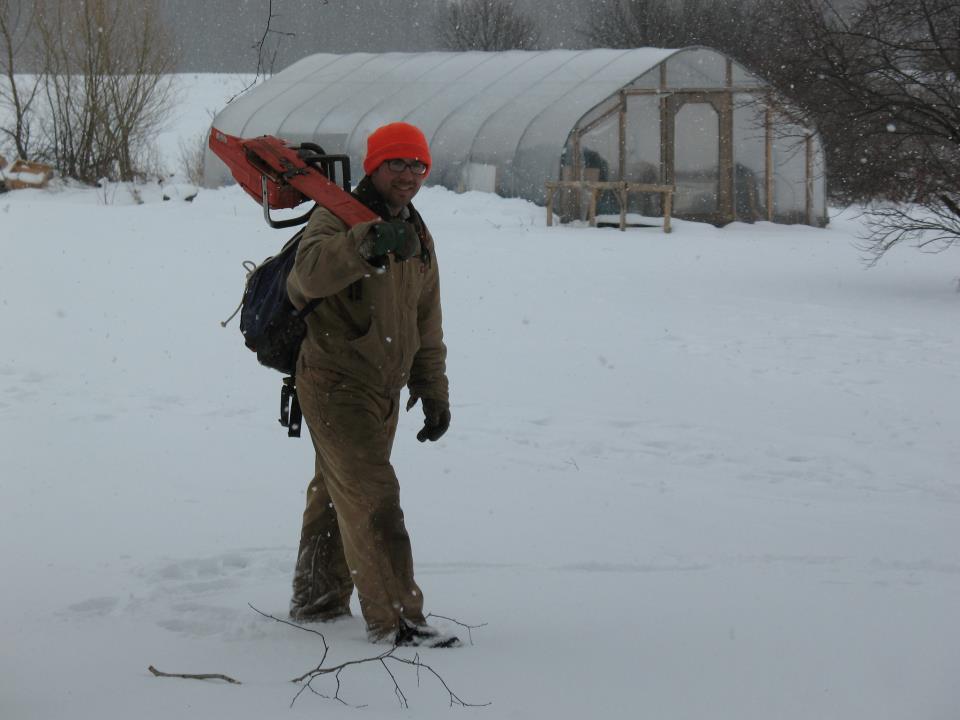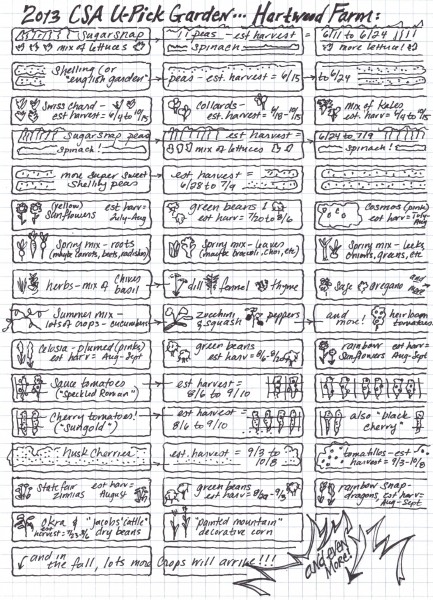Winter Working--How We Figure Out What We Grow!
/Despite our lack of blogging, we have been busy on the farm--just either not working on very photogenic stuff or working in non-camera friendly conditions, though Matt's been rocking the chainsaw, cutting wood for next winter! (We are looking for a wood/oil furnace for our greenhouse if anyone out there knows of one floating around!)
 Since one of our most common questions is, "what DO you do in the winter?" we thought we'd itemize a bit of what most of our winter work entails--crop planning! The basic theory of crop planning is to do anything that involves thinking and decision making in the quiet winter time and write it all down so that in the hectic, crazy, sometimes 20 hour days of spring, minimal thinking is involved (and we don't forget to plant anything)!
Since one of our most common questions is, "what DO you do in the winter?" we thought we'd itemize a bit of what most of our winter work entails--crop planning! The basic theory of crop planning is to do anything that involves thinking and decision making in the quiet winter time and write it all down so that in the hectic, crazy, sometimes 20 hour days of spring, minimal thinking is involved (and we don't forget to plant anything)!
We started by deciding: 1) what markets we want to go to (the Cazenovia summer market, and a number of winter markets); 2) to expand our CSA a bit and add a second delivery loop out to Utica/Rome; and 3) to add a bunch of new crops (potatoes, sweet corn, sweet potatoes, strawberries, and more).
Once we figured out what and where we are selling, we then calculate out how much of each crop we need to grow. Essentially, we sketch out exactly what crops we will have to harvest each week for every CSA member and our market (barring weird weather, disease, or pests) from May through December. And then we do the math to figure out how much we need of each supply to grow that crop (mulch, trellis posts, twine, foliar sprays, trays, harvest boxes, irrigation line, and on and on). We then go back and forth a bit to figure out what combination of crops will best please our members and market, while being the most efficient use of space, time, and resources.
This process generally takes us about a month, and by the time we are done, we are usually tired of algebra, geometry, and computers! However, we also have a set of documents that tells us what we are planting, when and where we are planting it, and a ton of other details. This comes in handy when the season's rush arrives, and lets us be more efficient with our limited time and money!
The final step in planning is assembling all our orders. This is really satisfying and fun (who doesn't love seed catalogs?) but also a bit scary, since we end up purchasing 90% of our farm's expenses in a 3 week period in February (gulp!), before we even start growing any crops! This is where the CSA model really can really help farmers, both by making planning easier since you know who you are growing for, and make juggling pre-season expenses less challenging thanks to early signups and deposits. (On that note, a big thanks to all our great members!)


